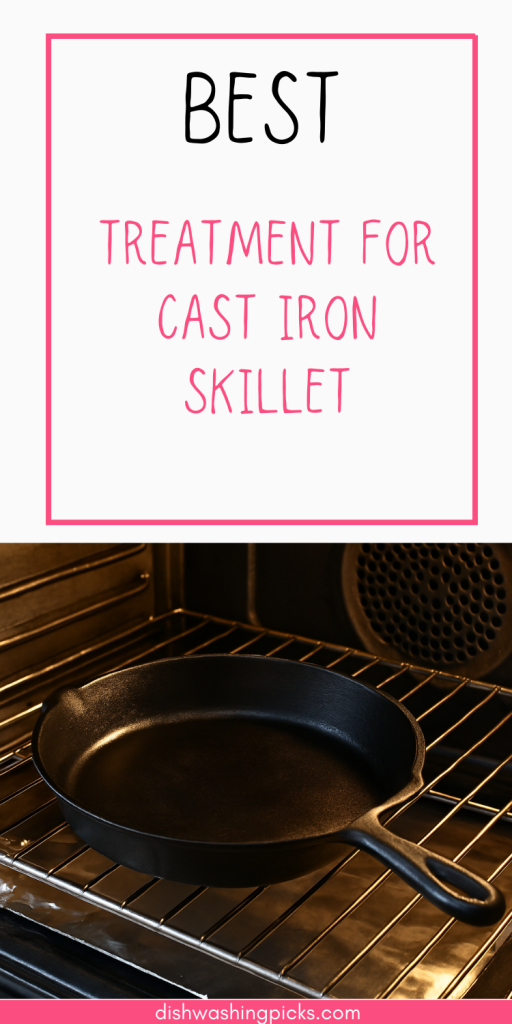Ah, the cast iron skillet. If you’ve got one, you know it’s basically a kitchen superhero. It can do everything, from frying up crispy bacon to making the perfect cornbread. But here’s the thing: to keep your skillet working its magic, it needs a little TLC. Yep, just like you, it needs a good treatment every now and then to keep it in top shape.
So, what’s the best treatment for your cast iron skillet? Don’t worry—I’ve got you covered. Let’s dive in, shall we?
Why Treatment is Key
Okay, so you might be thinking, “Why all the fuss about treating my skillet?” It’s just a pan, right? Well, not exactly. Cast iron is unique. Unlike your average non-stick pan, cast iron requires a little more attention. It’s all about that “seasoning” process, which is basically a fancy word for keeping the pan well-oiled so it doesn’t rust and, most importantly, keeps that beautiful non-stick surface.
Now, let’s break this down a bit. Every time you cook with your skillet, you’re adding a layer of seasoning. Over time, this builds up and creates a kind of protective coating that gives your food that perfect crispy texture. But if you’re not treating your skillet right, the seasoning can wear down, and that’s when things can get ugly (rust, sticking food, and just general sadness).
So, what’s the secret sauce for keeping your skillet in shape? Let’s jump into that next.
How to Clean Your Cast Iron Skillet (Without Ruining It)
Now, cleaning a cast iron skillet is a little different from scrubbing your regular pans. For one, you don’t want to use soap (yes, I said it). Soap can strip away that lovely seasoning you’ve worked so hard on. But before you panic, don’t worry—there’s a simple way to clean it.
- Let it cool down: I know, it’s tempting to throw it under cold water right after cooking, but wait a bit. Let it cool down to avoid warping the metal.
- Scrub with a brush or scraper: Once it’s cool enough, use a stiff brush or a scraper to get rid of the food bits. You can also use a little water to help loosen anything stuck.
- Dry it immediately: This is super important. Cast iron is prone to rusting, so make sure you dry it immediately with a towel. You can even pop it on the stove for a minute to make sure all the moisture evaporates.
See? Simple, right? But here’s the thing: even after cleaning, you still need to treat the skillet to make sure it’s ready for the next round of cooking.
Seasoning Your Cast Iron Skillet: The Magic Step
Alright, here’s where the real magic happens. Seasoning your skillet isn’t just about giving it a little oil; it’s about creating that beautiful non-stick layer. And when done right, it’ll make cooking and cleaning a breeze. So, let’s talk about the best way to do it.
- Use a high-smoke point oil: You want to pick an oil that can handle the heat without burning. Think vegetable oil, flaxseed oil, or grapeseed oil. Avoid olive oil, as it has a low smoke point and won’t give you the best results.
- Apply a thin layer: This is crucial. Don’t drown your skillet in oil. Just a light, even coating is enough. You can use a paper towel or cloth to rub it in.
- Bake it: Here’s the part where it gets a little more involved. Pop your skillet upside down in an oven preheated to about 450°F (230°C). Place a sheet of aluminum foil on the bottom rack to catch any drips. Bake for about an hour, then turn off the oven and let the skillet cool inside.
Now, this might seem like a lot of work, but trust me, it’s worth it. The result? A skillet that’s as non-stick as they come and ready to take on anything from searing steaks to baking pizza. But hang tight, we’re not done yet! There’s still more to keep in mind.
Keeping Your Skillet in Tip-Top Shape
Alright, so you’ve cleaned, seasoned, and your skillet is looking good. But don’t just stop there! To keep it in tip-top shape, you need to take care of it after every use. It’s not a one-and-done deal. Here are a couple of things to remember:
- Re-season after heavy use: If you’ve cooked something super sticky (we’re looking at you, sugary stuff), it’s a good idea to re-season the pan. Just a quick, light coat of oil and a little bake, and you’re golden.
- Store it properly: Always store your skillet in a dry place. If you stack it with other pans, put a paper towel or cloth between them to prevent scratches and keep moisture out.
- Avoid cooking acidic foods: Acidic stuff like tomatoes can break down the seasoning over time, so maybe avoid making spaghetti sauce in it every day.
It’s these little habits that will ensure your cast iron skillet stays a kitchen staple for years to come.
Treat Your Skillet Right, and It’ll Treat You Right
At the end of the day, your cast iron skillet is pretty much the MVP of your kitchen. A little care goes a long way. Treat it with love, and it’ll keep serving you for decades—maybe even centuries (seriously, some cast iron skillets last a lifetime or more).
So next time you pull out that skillet, give it a quick clean, slap on some oil, and throw it in the oven for a little TLC. You’ll be cooking with the kind of confidence that only a well-treated cast iron skillet can give you.
Now, imagine how much better your next meal will taste with a skillet that’s in perfect condition! Ready to give it a go?

